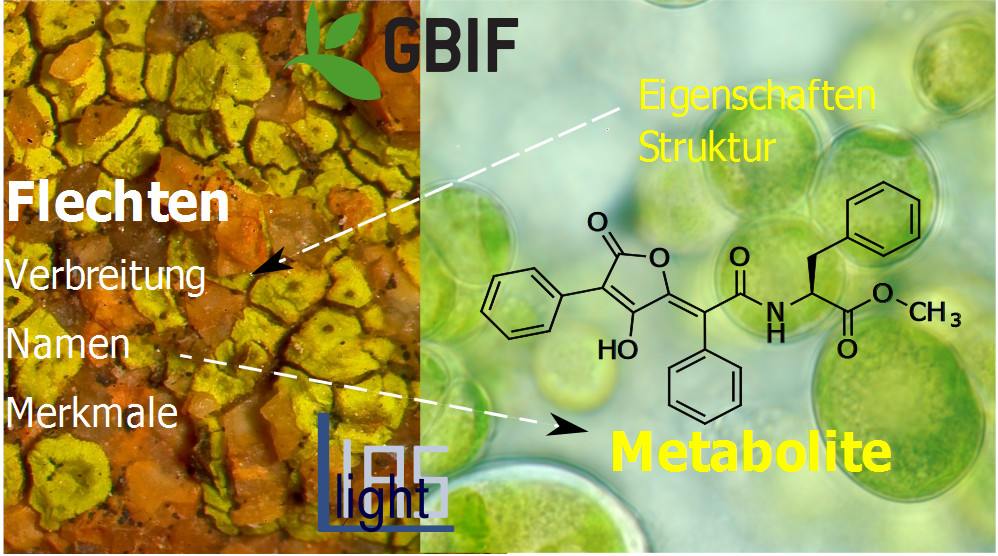Integration of Research Data Explains the Global Occurrence of Lichens Based on the Function of Their Secondary Metabolites
The global distribution patterns of lichen communities consisting of fungi and algae are not only an effect of internal evolutionary processes. They are apparently the result of selection controlled by environmental factors via the production of so-called lichen substances. An interdisciplinary team of researchers, with the participation of the SNSB IT Center, correlated the research data of over 10,000 lichen species from various information systems. The scientists recently published their results in the journal Ecology Letters.
Lichens, which form symbiotic associations between a dominant fungal species and an algal species, colonize all parts of our planet, from the polar regions to the equator. The fungal partner (mycobiont), which depends on the carbon compounds from the photosynthesis of the alga (photobiont), protects the latter from the harmful effects of UV radiation and other environmental influences. To do this, the fungus exerts a high metabolic effort by protecting the UV-sensitive green algae with UV-absorbing secondary metabolites (so-called “lichen substances”). However, these lichen substances are water-soluble to a certain extent, which favors their leaching from the lichen body in regions with high precipitation and high temperatures, such as the tropics.
In what way the interdependence between fungi and algae in terms of water solubility and UV efficiency of lichen substances affects the global occurrence of lichens has been investigated by an interdisciplinary team from the fields of plant ecology, mycology/ lichenology, natural product chemistry, phylogenetics, bioinformatics, ecoinformatics and, last but not least, data science at the Bavarian Natural History Collections (SNSB) and the Universities of Hohenheim and Bayreuth. For this purpose, the publicly available data sets of the Global Biodiversity Information Facility GBIF (www.gbif.org) regarding global occurrence as well as the data sets of the Global Information System for Lichens LIAS (www.lias.net) at the SNSB IT Center regarding the ecological and chemical characteristics of more than 10,000 lichen species were jointly analyzed and related to elaborately calculated physicochemical properties of the lichen substances.
It turns out that UV radiation as well as temperature and correlated precipitation determine the global distribution of the chemical properties of lichen substances. The global distribution patterns of lichen communities of fungi and algae are thus not only an effect of internal evolutionary processes, but also – perhaps even predominantly – the result of selection on the production of lichen substances controlled by the aforementioned environmental factors.
The databases from the LIAS information system used for the computationally intensive analyses have been scientifically maintained at the Bavarian State Collection for Botany in Munich (SNSB-BSM) for more than 20 years and expanded in terms of information technology at the local data center (SNSB IT center). “The world’s largest database for lichen trait data enables global analyses as well as interactive determinations of well over half of all known lichen species,” explains Dr. Dagmar Triebel, head of the SNSB IT Center and deputy director of the Bavarian State Collection for Botany.

Publication:
Schweiger, A.H., Ullmann, G.M., Nürk, N.M., Triebel, D., Schobert, R. & Rambold, G. 2021. Chemical properties of key metabolites determine the global distribution of lichens. Ecol. Letters 2021;00:1-11: https://doi.org/10.1111/ele.13930
Links:
https://www.gbif.org/
http://www.lias.net/
Contact:
Dr. Dagmar Triebel
Botanische Staatssammlung München und SNSB IT-Zentrum
Menzinger Straße 67, 80638 München
Tel.: 089 17861 252
Email: triebel@snsb.de

